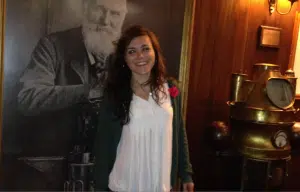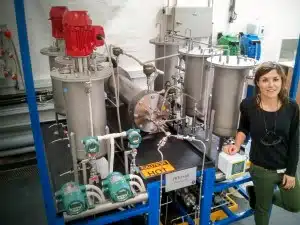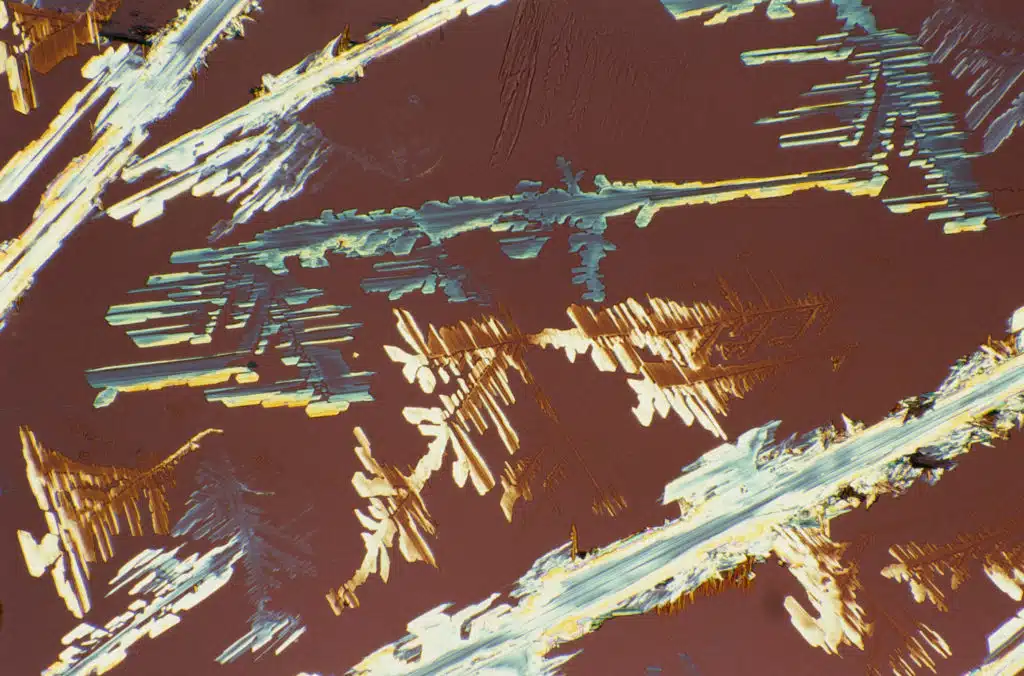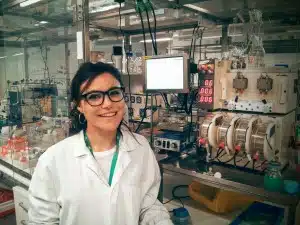Tiny porous crystals have the capacity to remove carbon dioxide and other harmful gases from the atmosphere and will soon be available for real-world applications thanks to CSIRO researchers in Melbourne.
The potential for these nanocrystals, known as metal-organic frameworks (MOFs), has long been held back by the terrifically time-consuming processes needed to create them. But now they can be produced by the kilogram, using an approach – developed by CSIRO’s Marta Rubio Martinez – that will transfer their vast potential from the laboratory to industry.
“This is a game changer for MOF technology. We increased the production yield from only 1 gram in ten days to several kilograms per hour, without any loss in quality,” reveals Marta, a CSIRO postdoctoral fellow.
These crystals have a sponge-like, porous structure, which creates an enormous amount of surface area. “One gram of these crystals has the same surface area as an entire football field,” says Marta.
Up to 80 per cent of the structure’s volume is empty space. “For example, a tank filled with our nanocrystals could store up to ten times more carbon dioxide gas within the same volume.”
The reactions used to create these materials are usually slow and yield only a few milligrams of high quality crystals. This has been the obstacle to MOFs being cost-effective for real-world energy and transportation applications. But Marta and her colleagues have figured out how to overcome this:
“Instead of making the reaction vessel bigger, we pumped the ingredients through a small tube that gives us enough surface to create the crystals,” explains Marta. “This dramatically reduced the reaction times from days to minutes.
Marta and her colleagues are now working to produce and commercialise the nanocrystals at a large scale, working together with industry partners to implement MOF technology for a sustainable future.
Marta presented her research at Fresh Science Victoria 2015.
Fresh Science is a national program that helps early-career researchers find and share their stories of discovery. Over 30 early-career researchers nominated for Fresh Science Victoria, which was held at Scienceworks (training), Melbourne Museum (schools forum) and the Kelvin Club (public challenge event).
Fresh Science Victoria was supported by Museum Victoria, Bio-Medical Research Victoria and the Office of the Victorian Lead Scientist.
Marta Rubio Martinez, CSIRO, Marta.rubio@csiro.au

Marta at the Kelvin Club

Marta with high throughout reaction vessel






 Fresh Science is on hold for 2022. We will be back in 2023.
Fresh Science is on hold for 2022. We will be back in 2023.